Water is Life
- Thread starter Cliffy
- Start date
You are using an out of date browser. It may not display this or other websites correctly.
You should upgrade or use an alternative browser.
You should upgrade or use an alternative browser.
Scientists urge permanent protection of Last Ice Area in Canada's High Arctic
Researchers and Inuit groups are calling for stronger protections for Canada’s northernmost waters as the so-called Last Ice Area rapidly lives up to its name.
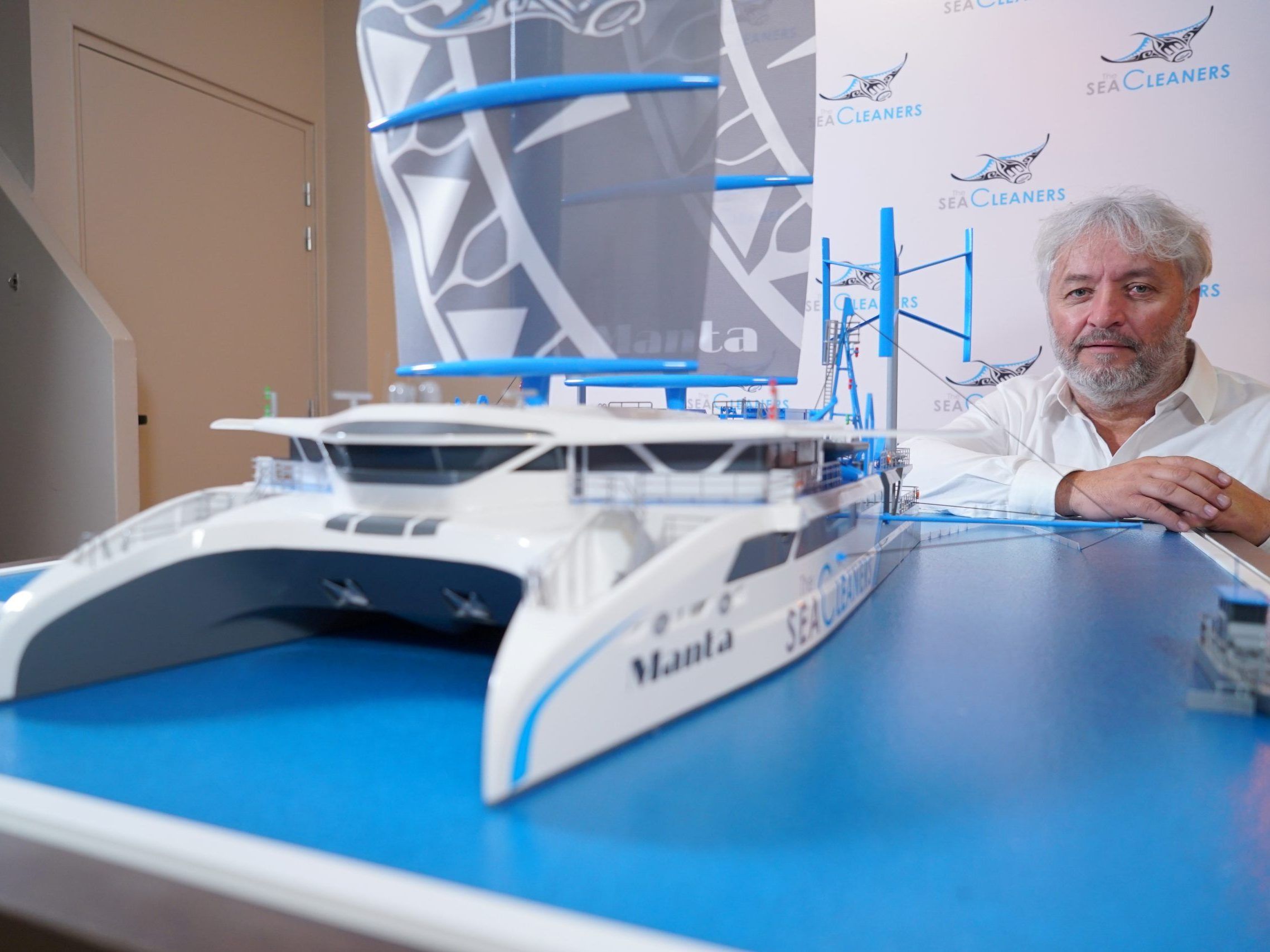
French team designs ocean cleanup yacht that feeds on plastic trash
PARIS — A French ocean adventurer and his team have designed a yacht which he says can scoop up plastic garbage to stop it blighting the world’s oceans, and convert…
From Spam's link above:Scientists urge permanent protection of Last Ice Area in Canada's High Arctic
Researchers and Inuit groups are calling for stronger protections for Canada’s northernmost waters as the so-called Last Ice Area rapidly lives up to its name.torontosun.com
"The region is provisionally protected until 2024. But Mueller said the pace of Arctic warming argues for permanent status as a Marine Protected Area connected to Quttinirpaaq National Park on Ellesmere’s north coast."
Ummmm... seems the minimum arctic ice was years ago...Oh well, that's U.N. truedoh! paid for global warming state news for you...
Charctic Interactive Sea Ice Graph | National Snow and Ice Data Center
How to use CharcticDeveloped at NSIDC with support from NASA, the Charctic Interactive Sea Ice Graph enables users to more easily access and explore the National Oceanic and Atmospheric Ad
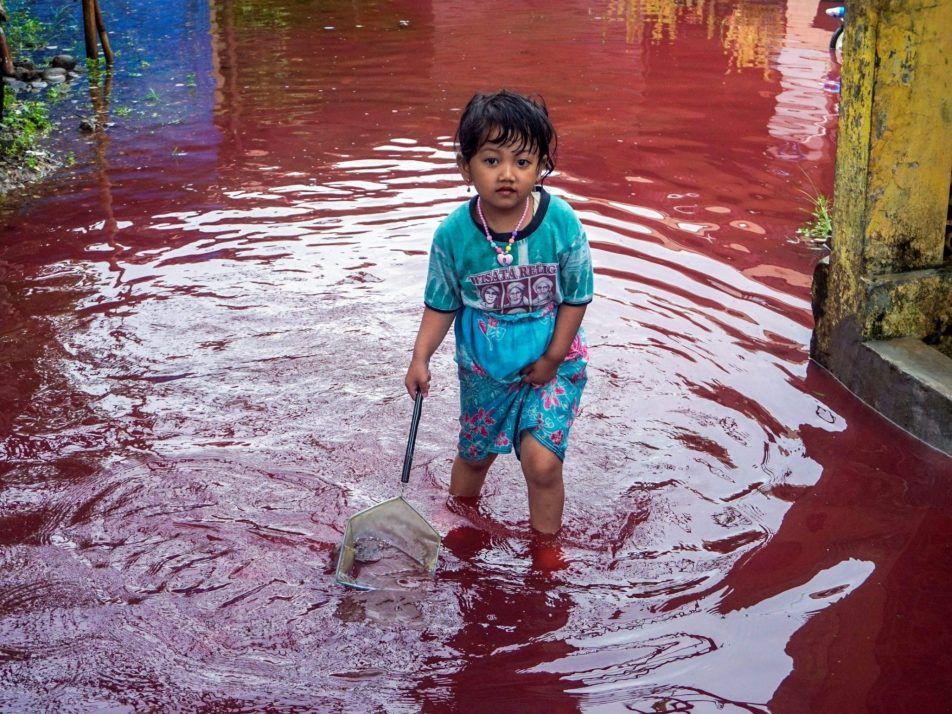
BLOOD-RED RIVER: Indonesian village turns crimson after floods hit dye factory
JAKARTA — A surreal, blood-red river inundated the Indonesian village of Jenggot after floods hit a nearby batik factory on Saturday, causing a frenzy on social med…

Hacker tried to poison Florida town's water supply with lye: Cops
The water treatment plant contacted the sheriff's office who opened an investigation.
Think blue — it's Water Day
Author of the article:Kevin Connor
Publishing date:Mar 21, 2021 • 1 day ago • 1 minute read • comment bubbleJoin the conversation
People sit on the banks of the river Yamuna — half covered with foam caused by pollution — on the eve of World Water Day in New Delhi on March 21, 2021.
People sit on the banks of the river Yamuna — half covered with foam caused by pollution — on the eve of World Water Day in New Delhi on March 21, 2021. PHOTO BY AFP VIA GETTY IMAGES /Toronto Sun
Article content
Without water, there is no life.
The CN Tower and the city’s iconic “Toronto” sign in Nathan Phillips Square will be lit up in blue Monday to mark World Water Day.
“While access to clean water is a core part of the Canadian identity, it’s not a reality shared equally around the globe,” said Brian Johns, CEO of the charity, Water Ambassadors Canada. “Today, one in 10 people lacks access to clean drinking water and 2.3 billion people lack access to basic sanitation.”
A lack of clean water is the number one cause of death and disease in the world, added Johns.
“But the good news is that addressing this global challenge is simple: give people the basic tools they need to access and maintain clean water,” he said.
In addition to those in Toronto, landmarks across the country will be lit up in blue, including Vancouver City Hall, Calgary Science Center, Charlottetown City Hall, London City Hall and the Winnipeg sign at The Forks.
Advertisement
STORY CONTINUES BELOW
This advertisement has not loaded yet, but your article continues below.
Article content
Water Ambassadors Canada has worked in 20 countries for two decades on water problems.
“Even during a global pandemic, there’s still a lot of ways people across Canada can help,” Johns said.
“While our volunteer trips to partner countries are on hold, we’re still connecting our in-country partner teams with the financial and material resources they need to keep water flowing.”
The organization provides filters and stations to purify water, chlorinators to treat contaminated water, and helps build wells and repair existing ones.
Water Ambassadors Canada is now working to raise $100,000 to fund new water projects around the world.
 waterambassadorscanada.org
waterambassadorscanada.org
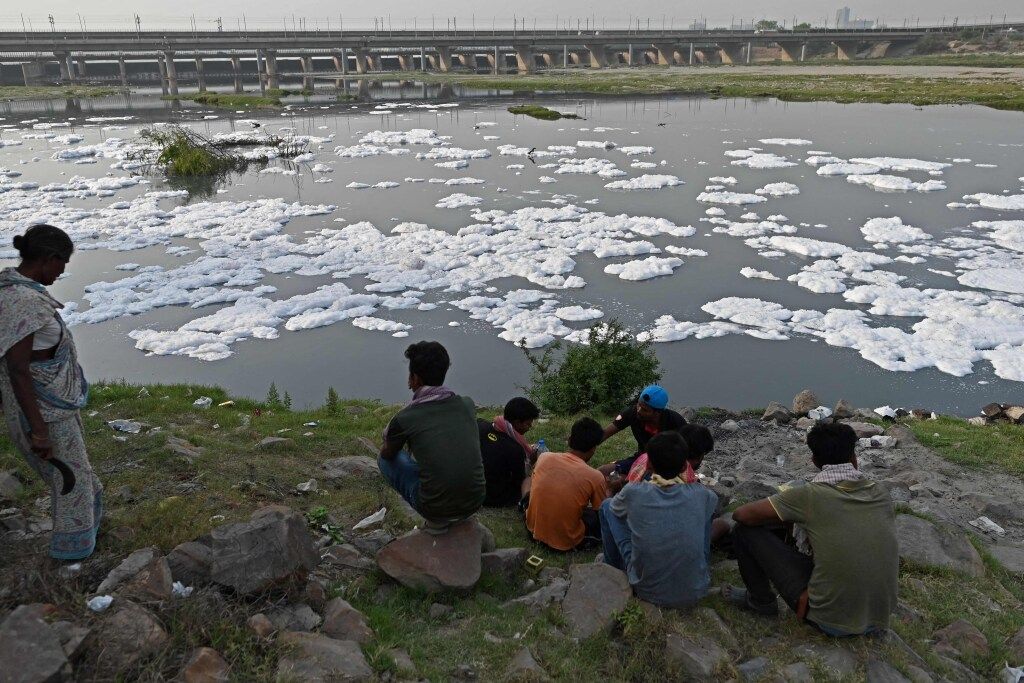
Author of the article:Kevin Connor
Publishing date:Mar 21, 2021 • 1 day ago • 1 minute read • comment bubbleJoin the conversation
People sit on the banks of the river Yamuna — half covered with foam caused by pollution — on the eve of World Water Day in New Delhi on March 21, 2021.
People sit on the banks of the river Yamuna — half covered with foam caused by pollution — on the eve of World Water Day in New Delhi on March 21, 2021. PHOTO BY AFP VIA GETTY IMAGES /Toronto Sun
Article content
Without water, there is no life.
The CN Tower and the city’s iconic “Toronto” sign in Nathan Phillips Square will be lit up in blue Monday to mark World Water Day.
“While access to clean water is a core part of the Canadian identity, it’s not a reality shared equally around the globe,” said Brian Johns, CEO of the charity, Water Ambassadors Canada. “Today, one in 10 people lacks access to clean drinking water and 2.3 billion people lack access to basic sanitation.”
A lack of clean water is the number one cause of death and disease in the world, added Johns.
“But the good news is that addressing this global challenge is simple: give people the basic tools they need to access and maintain clean water,” he said.
In addition to those in Toronto, landmarks across the country will be lit up in blue, including Vancouver City Hall, Calgary Science Center, Charlottetown City Hall, London City Hall and the Winnipeg sign at The Forks.
Advertisement
STORY CONTINUES BELOW
This advertisement has not loaded yet, but your article continues below.
Article content
Water Ambassadors Canada has worked in 20 countries for two decades on water problems.
“Even during a global pandemic, there’s still a lot of ways people across Canada can help,” Johns said.
“While our volunteer trips to partner countries are on hold, we’re still connecting our in-country partner teams with the financial and material resources they need to keep water flowing.”
The organization provides filters and stations to purify water, chlorinators to treat contaminated water, and helps build wells and repair existing ones.
Water Ambassadors Canada is now working to raise $100,000 to fund new water projects around the world.
Water Ambassadors Canada

Japan to release contaminated Fukushima water into sea after treatment
Author of the article:Reuters
Reuters
Yuka Obayashi and Aaron Sheldrick
Publishing date:Apr 13, 2021 • 9 hours ago • 3 minute read • Join the conversation
This picture taken on March 10, 2021 of the coast of Futaba town, in Fukushima prefecture, shows the Tokyo Electric Power Company Holdings (TEPCO) Fukushima Daiichi nuclear power plant.
This picture taken on March 10, 2021 of the coast of Futaba town, in Fukushima prefecture, shows the Tokyo Electric Power Company Holdings (TEPCO) Fukushima Daiichi nuclear power plant. PHOTO BY KAZUHIRO NOGI /AFP via Getty Images
Article content
TOKYO — Japan will release more than 1 million tonnes of contaminated water from the destroyed Fukushima nuclear plant into the sea, the government said on Tuesday, a move China called “extremely irresponsible,” while South Korea summoned Tokyo’s ambassador in Seoul to protest.
The first release of water will take place in about two years, giving plant operator Tokyo Electric Power time to begin filtering the water to remove harmful isotopes, build infrastructure and acquire regulatory approval.
Japan has argued the water release is necessary to press ahead with the complex decommissioning of the plant after it was crippled by a 2011 earthquake and tsunami. It says similarly filtered water is routinely released from nuclear plants around the world.
Nearly 1.3 million tonnes of contaminated water, or enough to fill about 500 Olympic-sized swimming pools, is stored in huge tanks at the plant at an annual cost of about 100 billion yen ($912.66 million) — and space is running out.
Advertisement
STORY CONTINUES BELOW
This advertisement has not loaded yet, but your article continues below.
Article content
“Releasing the … treated water is an unavoidable task to decommission the Fukushima Dai-ichi Nuclear Power Plant and reconstruct the Fukushima area,” Prime Minister Yoshihide Suga said of the process that will take decades to complete.
The decision comes about three months ahead of the postponed Tokyo Olympic Games, with some events to be held as close as 60 km (35 miles) from the wrecked plant. Former Japanese Minister Shinzo Abe in 2013 assured the International Olympics Committee in pitching for the games that Fukushima “will never do any damage to Tokyo.”
Tepco plans to filter the contaminated water to remove isotopes, leaving only tritium, a radioactive isotope of hydrogen hard to separate from water. Tepco will then dilute the water until tritium levels fall below regulatory limits, before pumping it into the ocean.
Tritium is considered to be relatively harmless because it does not emit enough energy to penetrate human skin. Other nuclear plants around the world routinely pump water with low levels of the isotope into the ocean.
The United States noted that Japan has worked closely with the International Atomic Energy Agency in its handling of the site.
“In this unique and challenging situation, Japan has weighed the options and effects, has been transparent about its decision, and appears to have adopted an approach in accordance with globally accepted nuclear safety standards,” the U.S. Department of State said in a statement on its website.
Advertisement
STORY CONTINUES BELOW
This advertisement has not loaded yet, but your article continues below.
Article content
Japan’s neighbours reacted strongly, however, with both China and South Korea calling for more consultation on the plan.
“This action is extremely irresponsible, and will seriously damage international public health and safety, and the vital interests of people in neighbouring countries,” China’s foreign ministry said in a statement on its website.
South Korea’s government summoned Japan’s ambassador to Seoul to protest at the move.
“The decision can never be accepted and would not only cause danger to the safety and maritime environment of neighbouring countries,” a senior official told a briefing after vice-ministers held an emergency meeting to discuss the issue.
“It was also made unilaterally without sufficient consultations with our country, which is the closest neighbour to Japan,” Koo said.
At a briefing in Tokyo later in the day a government official told reporters that Japan had consulted neighbours.
Taiwan has also expressed concern.
Fishing unions in Fukushima have urged the government for years not to release the water, arguing it would have a “catastrophic impact” on the industry.
A Scientific American article reported in 2014 that when ingested tritium can raise cancer risks, while some experts are worried about other contaminants. The water currently contains significant amounts of harmful isotopes despite years of treatment, according to Tepco.
“My concern is about non-tritium radioactive contaminants that still remain in the tanks at high levels,” said Ken Buesseler, a senior scientist at the Woods Hole Oceanographic Institution in Massachusetts.
“These other contaminants are all of greater health risk than tritium and accumulate more readily in seafood and sea floor sediments,” added Buesseler, who has studied the waters around Fukushima.
The Japanese government has been keen to stress the filtering and dilution processes. A senior government public affairs official emailed media outlets on Monday to request the term “contaminated” not be used in reporting, arguing it was misleading.
Fishing communities and others suffering reputational harm from the release will be compensated, Tepco said.
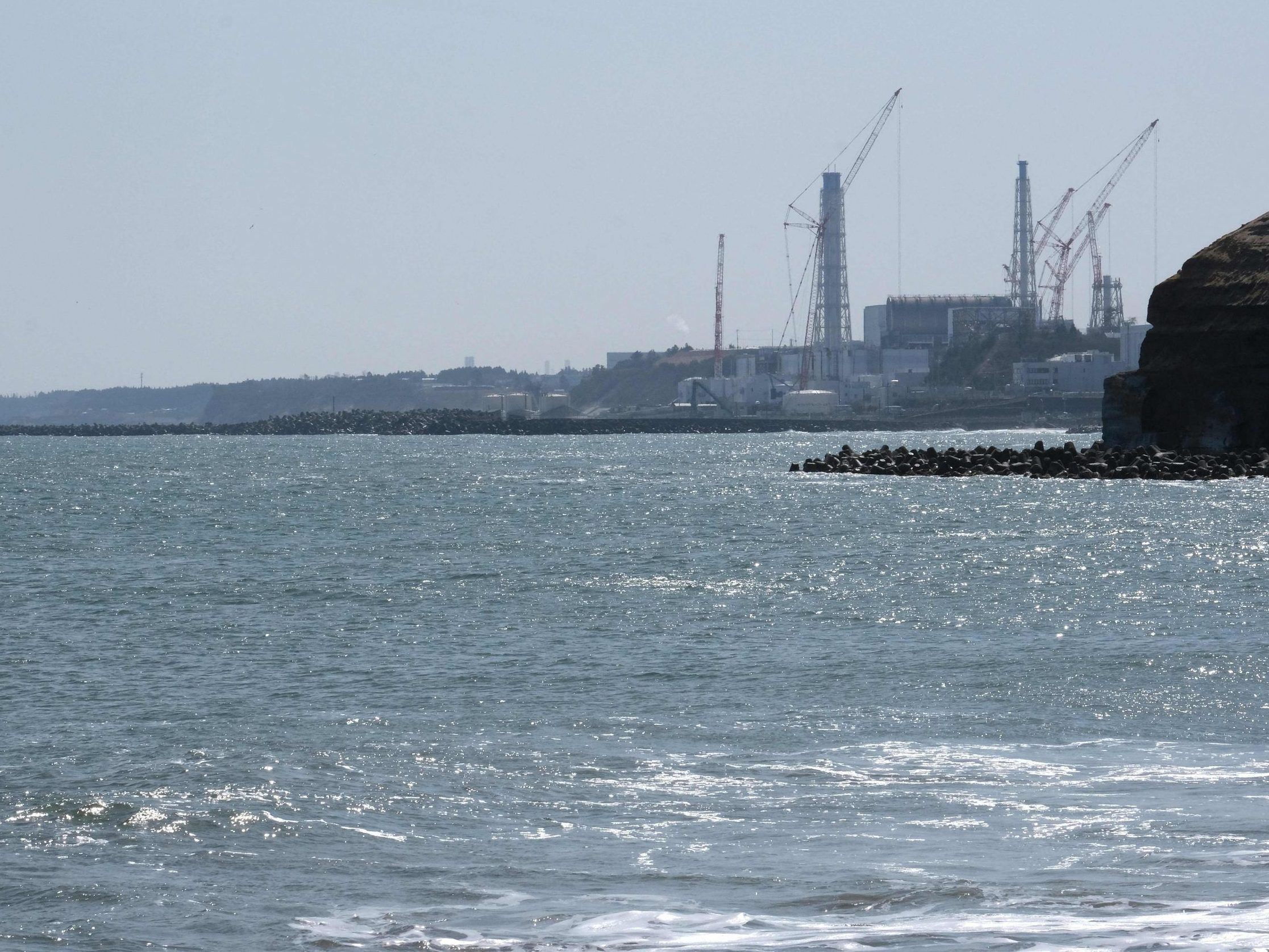
 torontosun.com
torontosun.com
Author of the article:Reuters
Reuters
Yuka Obayashi and Aaron Sheldrick
Publishing date:Apr 13, 2021 • 9 hours ago • 3 minute read • Join the conversation
This picture taken on March 10, 2021 of the coast of Futaba town, in Fukushima prefecture, shows the Tokyo Electric Power Company Holdings (TEPCO) Fukushima Daiichi nuclear power plant.
This picture taken on March 10, 2021 of the coast of Futaba town, in Fukushima prefecture, shows the Tokyo Electric Power Company Holdings (TEPCO) Fukushima Daiichi nuclear power plant. PHOTO BY KAZUHIRO NOGI /AFP via Getty Images
Article content
TOKYO — Japan will release more than 1 million tonnes of contaminated water from the destroyed Fukushima nuclear plant into the sea, the government said on Tuesday, a move China called “extremely irresponsible,” while South Korea summoned Tokyo’s ambassador in Seoul to protest.
The first release of water will take place in about two years, giving plant operator Tokyo Electric Power time to begin filtering the water to remove harmful isotopes, build infrastructure and acquire regulatory approval.
Japan has argued the water release is necessary to press ahead with the complex decommissioning of the plant after it was crippled by a 2011 earthquake and tsunami. It says similarly filtered water is routinely released from nuclear plants around the world.
Nearly 1.3 million tonnes of contaminated water, or enough to fill about 500 Olympic-sized swimming pools, is stored in huge tanks at the plant at an annual cost of about 100 billion yen ($912.66 million) — and space is running out.
Advertisement
STORY CONTINUES BELOW
This advertisement has not loaded yet, but your article continues below.
Article content
“Releasing the … treated water is an unavoidable task to decommission the Fukushima Dai-ichi Nuclear Power Plant and reconstruct the Fukushima area,” Prime Minister Yoshihide Suga said of the process that will take decades to complete.
The decision comes about three months ahead of the postponed Tokyo Olympic Games, with some events to be held as close as 60 km (35 miles) from the wrecked plant. Former Japanese Minister Shinzo Abe in 2013 assured the International Olympics Committee in pitching for the games that Fukushima “will never do any damage to Tokyo.”
Tepco plans to filter the contaminated water to remove isotopes, leaving only tritium, a radioactive isotope of hydrogen hard to separate from water. Tepco will then dilute the water until tritium levels fall below regulatory limits, before pumping it into the ocean.
Tritium is considered to be relatively harmless because it does not emit enough energy to penetrate human skin. Other nuclear plants around the world routinely pump water with low levels of the isotope into the ocean.
The United States noted that Japan has worked closely with the International Atomic Energy Agency in its handling of the site.
“In this unique and challenging situation, Japan has weighed the options and effects, has been transparent about its decision, and appears to have adopted an approach in accordance with globally accepted nuclear safety standards,” the U.S. Department of State said in a statement on its website.
Advertisement
STORY CONTINUES BELOW
This advertisement has not loaded yet, but your article continues below.
Article content
Japan’s neighbours reacted strongly, however, with both China and South Korea calling for more consultation on the plan.
“This action is extremely irresponsible, and will seriously damage international public health and safety, and the vital interests of people in neighbouring countries,” China’s foreign ministry said in a statement on its website.
South Korea’s government summoned Japan’s ambassador to Seoul to protest at the move.
“The decision can never be accepted and would not only cause danger to the safety and maritime environment of neighbouring countries,” a senior official told a briefing after vice-ministers held an emergency meeting to discuss the issue.
“It was also made unilaterally without sufficient consultations with our country, which is the closest neighbour to Japan,” Koo said.
At a briefing in Tokyo later in the day a government official told reporters that Japan had consulted neighbours.
Taiwan has also expressed concern.
Fishing unions in Fukushima have urged the government for years not to release the water, arguing it would have a “catastrophic impact” on the industry.
A Scientific American article reported in 2014 that when ingested tritium can raise cancer risks, while some experts are worried about other contaminants. The water currently contains significant amounts of harmful isotopes despite years of treatment, according to Tepco.
“My concern is about non-tritium radioactive contaminants that still remain in the tanks at high levels,” said Ken Buesseler, a senior scientist at the Woods Hole Oceanographic Institution in Massachusetts.
“These other contaminants are all of greater health risk than tritium and accumulate more readily in seafood and sea floor sediments,” added Buesseler, who has studied the waters around Fukushima.
The Japanese government has been keen to stress the filtering and dilution processes. A senior government public affairs official emailed media outlets on Monday to request the term “contaminated” not be used in reporting, arguing it was misleading.
Fishing communities and others suffering reputational harm from the release will be compensated, Tepco said.

Japan to release contaminated Fukushima water into sea after treatment
TOKYO — Japan will release more than 1 million tonnes of contaminated water from the destroyed Fukushima nuclear plant into the sea, the government said on Tuesday,…
Tonnes of dead fish wash up on shore of polluted Lebanese lake
Author of the article:Reuters
Reuters
Alaa Kanaan
Publishing date:Apr 30, 2021 • 2 hours ago • 1 minute read • Join the conversation
Dead fish are seen floating in Lake Qaraoun on the Litani River, Lebanon April 29, 2021. Picture taken April 29, 2021.
Dead fish are seen floating in Lake Qaraoun on the Litani River, Lebanon April 29, 2021. Picture taken April 29, 2021. PHOTO BY MOHAMED AZAKIR /REUTERS
Article content
QARAOUN — Tonnes of dead fish have washed up on the banks of a lake on Lebanon’s Litani river, engulfing a nearby village in a pungent smell, in a disaster blamed on polluted waters.
Volunteers collected rotting fish carcasses near the Qaraoun lake on Lebanon’s longest river, the Litani, where activists have warned for years of water pollution caused by sewage and waste.
Piles of garbage drifted in the lake near the dead fish. Swarms of flies spread near the reservoir and thousands of fish were decomposing in already dirty waters.
“This phenomenon appeared on the shore of the lake several days ago,” said Ahmad Askar, a local activist. “The fish started floating up, and in abnormal quantities…It’s unacceptable.”
At least 40 tonnes have turned up dead in a few days, numbers which Askar and fishermen in Qaraoun described as unprecedented. They called on the Litani river authority to find the cause and go after anyone dumping wastewater into the lake.
Advertisement
STORY CONTINUES BELOW
This advertisement has not loaded yet, but your article continues below.
Article content
The river authority said this week that the fish were toxic and carried a virus, urging people to avoid fishing all along the Litani due to “an aggravated disaster that threatens public health.”
The pollution prompted a ban since 2018 on fishing in the reservoir, which was created in 1959 with a large dam to collect water for hydropower and irrigation.
Last month, volunteers removed clumps of sticky tar from some beaches along the Lebanese coast after an oil spill which environmentalists warned would harm marine life.
Ecological disasters are the last thing Lebanon needs as it suffers through an alarming financial collapse and the aftermath of a huge explosion that devastated Beirut port last August.
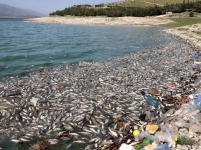

 torontosun.com
torontosun.com
Author of the article:Reuters
Reuters
Alaa Kanaan
Publishing date:Apr 30, 2021 • 2 hours ago • 1 minute read • Join the conversation
Dead fish are seen floating in Lake Qaraoun on the Litani River, Lebanon April 29, 2021. Picture taken April 29, 2021.
Dead fish are seen floating in Lake Qaraoun on the Litani River, Lebanon April 29, 2021. Picture taken April 29, 2021. PHOTO BY MOHAMED AZAKIR /REUTERS
Article content
QARAOUN — Tonnes of dead fish have washed up on the banks of a lake on Lebanon’s Litani river, engulfing a nearby village in a pungent smell, in a disaster blamed on polluted waters.
Volunteers collected rotting fish carcasses near the Qaraoun lake on Lebanon’s longest river, the Litani, where activists have warned for years of water pollution caused by sewage and waste.
Piles of garbage drifted in the lake near the dead fish. Swarms of flies spread near the reservoir and thousands of fish were decomposing in already dirty waters.
“This phenomenon appeared on the shore of the lake several days ago,” said Ahmad Askar, a local activist. “The fish started floating up, and in abnormal quantities…It’s unacceptable.”
At least 40 tonnes have turned up dead in a few days, numbers which Askar and fishermen in Qaraoun described as unprecedented. They called on the Litani river authority to find the cause and go after anyone dumping wastewater into the lake.
Advertisement
STORY CONTINUES BELOW
This advertisement has not loaded yet, but your article continues below.
Article content
The river authority said this week that the fish were toxic and carried a virus, urging people to avoid fishing all along the Litani due to “an aggravated disaster that threatens public health.”
The pollution prompted a ban since 2018 on fishing in the reservoir, which was created in 1959 with a large dam to collect water for hydropower and irrigation.
Last month, volunteers removed clumps of sticky tar from some beaches along the Lebanese coast after an oil spill which environmentalists warned would harm marine life.
Ecological disasters are the last thing Lebanon needs as it suffers through an alarming financial collapse and the aftermath of a huge explosion that devastated Beirut port last August.


Tonnes of dead fish wash up on shore of polluted Lebanese lake
QARAOUN — Tonnes of dead fish have washed up on the banks of a lake on Lebanon’s Litani river, engulfing a nearby village in a pungent smell, in a disaster…
Etobicoke creek mysteriously turns bright blue
Author of the article:Kevin Connor
Publishing date:Apr 30, 2021 • 16 hours ago • 1 minute read • Join the conversation
Tom Riley Park in Etobicoke.
Tom Riley Park in Etobicoke. PHOTO BY CITY OF TORONTO /(toronto.ca)
Article content
An Etobicoke creek has turned the colour of a Banff lake.
The creek in Tom Riley Park has curiously become a bright blue.
But it is unclear how the stream in the Dundas St., W. and Islington Ave park turned blue
“At this time city staff are unable to determine why the water was blue,” spokesman Deborah Blackstone said. “The city is currently investigating the situation. City staff conducted a visual inspection by walking the creek located in Tom Riley Park and observed no blue colouration.”
Advertisement
STORY CONTINUES BELOW
This advertisement has not loaded yet, but your article continues below.
Article content
City staff is still actively looking into the initial report to determine the source,” she said.
“As no active spill was observed during the investigation, the city is unable to comment if the water was dangerous at this time. Further investigation is taking place,” Blackstone added.

 instagram.com
instagram.com

 torontosun.com
torontosun.com
Author of the article:Kevin Connor
Publishing date:Apr 30, 2021 • 16 hours ago • 1 minute read • Join the conversation
Tom Riley Park in Etobicoke.
Tom Riley Park in Etobicoke. PHOTO BY CITY OF TORONTO /(toronto.ca)
Article content
An Etobicoke creek has turned the colour of a Banff lake.
The creek in Tom Riley Park has curiously become a bright blue.
But it is unclear how the stream in the Dundas St., W. and Islington Ave park turned blue
“At this time city staff are unable to determine why the water was blue,” spokesman Deborah Blackstone said. “The city is currently investigating the situation. City staff conducted a visual inspection by walking the creek located in Tom Riley Park and observed no blue colouration.”
Advertisement
STORY CONTINUES BELOW
This advertisement has not loaded yet, but your article continues below.
Article content
City staff is still actively looking into the initial report to determine the source,” she said.
“As no active spill was observed during the investigation, the city is unable to comment if the water was dangerous at this time. Further investigation is taking place,” Blackstone added.

Daniel Underdown on Instagram: "This stream feeds the local creek. It's the one that supports most of the life I've been posting here and it is being pumped full of chemical detergent run off waste. It has turned blue. This untreated water will no do
14 likes, 8 comments - daniel.underdown on April 25, 2021: "This stream feeds the local creek. It's the one that supports most of the life I've been posting here and it is being pumped full of chemical detergent run off waste. It has turned blue. This untreated water will no doubt kill off any...
 instagram.com
instagram.com

Etobicoke creek mysteriously turns bright blue
An Etobicoke creek has turned the colour of a Banff lake.
ODDS AND ENDS: Unfortunate mascots and other offbeat offerings
Author of the article:Eddie Chau
Publishing date:May 01, 2021 • 17 hours ago • 3 minute read • Join the conversation
Little Mr Tritium was a mascot used to promote Fukushima wastewater dump. It was quickly scrapped.
Little Mr Tritium was a mascot used to promote Fukushima wastewater dump. It was quickly scrapped. PHOTO BY SCREENSHOT /YouTube/Japanese Government
Article content
JAPAN WISELY SCRAPS A RATHER UNFORTUNATE MASCOT
Sometimes not even a cute mascot can win over a crowd.
The Japanese government had hoped that Little Mr. Tritium, a cute animated character, would help win people’s support for the release of more than one million tonnes of contaminated water from the infamous Fukushima nuclear power plant into the sea, The Guardian reported.
While the water will reportedly be thoroughly treated before being released into the sea, the H20 will still contain tritium, a hydrogen isotope. Mr. Tritium is modelled after the isotope, complete with pink cheeks and big green nose.
Advertisement
STORY CONTINUES BELOW
This advertisement has not loaded yet, but your article continues below.
Article content
The cute character appeared briefly in online promotional material on the reconstruction company’s website, which angered residents of Fukashima, who felt Mr. Tritium trivialized the 2011 Fukushima nuclear disaster.
The agency behind the character’s creation pulled all promotional material featuring it a day after it was released. The company stated it created the character to explain the release of the isotope into the Japan sea as a standard nuclear plant practice.
Japanese officials say tritium is only harmful to people in large doses and that treated water poses no risk to them.
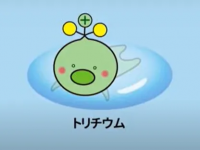

 theguardian.com
theguardian.com
Author of the article:Eddie Chau
Publishing date:May 01, 2021 • 17 hours ago • 3 minute read • Join the conversation
Little Mr Tritium was a mascot used to promote Fukushima wastewater dump. It was quickly scrapped.
Little Mr Tritium was a mascot used to promote Fukushima wastewater dump. It was quickly scrapped. PHOTO BY SCREENSHOT /YouTube/Japanese Government
Article content
JAPAN WISELY SCRAPS A RATHER UNFORTUNATE MASCOT
Sometimes not even a cute mascot can win over a crowd.
The Japanese government had hoped that Little Mr. Tritium, a cute animated character, would help win people’s support for the release of more than one million tonnes of contaminated water from the infamous Fukushima nuclear power plant into the sea, The Guardian reported.
While the water will reportedly be thoroughly treated before being released into the sea, the H20 will still contain tritium, a hydrogen isotope. Mr. Tritium is modelled after the isotope, complete with pink cheeks and big green nose.
Advertisement
STORY CONTINUES BELOW
This advertisement has not loaded yet, but your article continues below.
Article content
The cute character appeared briefly in online promotional material on the reconstruction company’s website, which angered residents of Fukashima, who felt Mr. Tritium trivialized the 2011 Fukushima nuclear disaster.
The agency behind the character’s creation pulled all promotional material featuring it a day after it was released. The company stated it created the character to explain the release of the isotope into the Japan sea as a standard nuclear plant practice.
Japanese officials say tritium is only harmful to people in large doses and that treated water poses no risk to them.


Japan scraps mascot promoting Fukushima wastewater dump
‘Little Mr Tritium’ was meant to help win support for release of contaminated water into sea
Chemical cargo ship sinks off Sri Lanka, fouling rich fishing waters
Author of the article:Reuters
Reuters
Waruna Karunatilake and Alasdair Pal
Publishing date:Jun 02, 2021 • 11 hours ago • 1 minute read • Join the conversation
This handout photograph taken and released by Sri Lanka Air Force on June 2, 2021 shows smoke billowing from the Singapore-registered container ship MV X-Press Pearl which carrys hundreds of containers of chemicals and plastics, as its towed away from the coast of Colombo, following Sri Lankan President Gotabaya Rajapaksa's order to move the ship to deeper water to prevent a bigger enviromental disaster.
This handout photograph taken and released by Sri Lanka Air Force on June 2, 2021 shows smoke billowing from the Singapore-registered container ship MV X-Press Pearl which carrys hundreds of containers of chemicals and plastics, as its towed away from the coast of Colombo, following Sri Lankan President Gotabaya Rajapaksa's order to move the ship to deeper water to prevent a bigger enviromental disaster. PHOTO BY SRI LANKA AIR FORCE /AFP via Getty Images
Article content
COLOMBO — A cargo ship carrying tonnes of chemicals sank off Sri Lanka’s west coast, its navy said on Wednesday, and tonnes of plastic pellets have fouled the country’s rich fishing waters in one of its worst-ever marine disasters.
The government on Wednesday suspended fishing along an 80-km (50-mile) stretch of the island’s coastline, affecting 5,600 fishing boats, and hundreds of soldiers have been deployed to clean affected beaches.
The Singapore-registered MV X-Press Pearl, carrying 1,486 containers, including 25 tonnes of nitric acid along with other chemicals and cosmetics, was anchored off Sri Lanka’s west coast when a fire erupted onboard after an explosion on May 20.
Flaming containers laden with chemicals tumbled into the sea from the ship’s deck as emergency crews sought to contain the blaze over the ensuing two weeks.
The craft began to sink early on Wednesday, and a salvage crew tried to tow the vessel to deeper water away from the coast, Fisheries Minister Kanchana Wijesekera said in a tweet, but the attempt was abandoned after several hours.
Advertisement
STORY CONTINUES BELOW
Article content
“The towing of the fire-engulfed X-Press Pearl ship was stopped due to the rear end of the vessel hitting the sea bed,” navy spokesman Captain Indika de Silva told Reuters.
Photos taken by the country’s air force showed the charred wreck of the ship spewing white smoke as it listed to the right and began sinking, and part of it soon touched the seabed, just 22 metres (73 feet) deep in the immediate area.
The navy was preparing to deal with an oil spill after the ship sank, Silva added.
“The ship has dealt a death blow to our lives,” said Joshua Anthony, head of a region fishing union. “We can’t go into the sea which means we can’t make a living.”
The MV X-Press Pearl had left the port of Hazira in India on May 15 and was on its way to Singapore via Colombo.


 torontosun.com
torontosun.com
Author of the article:Reuters
Reuters
Waruna Karunatilake and Alasdair Pal
Publishing date:Jun 02, 2021 • 11 hours ago • 1 minute read • Join the conversation
This handout photograph taken and released by Sri Lanka Air Force on June 2, 2021 shows smoke billowing from the Singapore-registered container ship MV X-Press Pearl which carrys hundreds of containers of chemicals and plastics, as its towed away from the coast of Colombo, following Sri Lankan President Gotabaya Rajapaksa's order to move the ship to deeper water to prevent a bigger enviromental disaster.
This handout photograph taken and released by Sri Lanka Air Force on June 2, 2021 shows smoke billowing from the Singapore-registered container ship MV X-Press Pearl which carrys hundreds of containers of chemicals and plastics, as its towed away from the coast of Colombo, following Sri Lankan President Gotabaya Rajapaksa's order to move the ship to deeper water to prevent a bigger enviromental disaster. PHOTO BY SRI LANKA AIR FORCE /AFP via Getty Images
Article content
COLOMBO — A cargo ship carrying tonnes of chemicals sank off Sri Lanka’s west coast, its navy said on Wednesday, and tonnes of plastic pellets have fouled the country’s rich fishing waters in one of its worst-ever marine disasters.
The government on Wednesday suspended fishing along an 80-km (50-mile) stretch of the island’s coastline, affecting 5,600 fishing boats, and hundreds of soldiers have been deployed to clean affected beaches.
The Singapore-registered MV X-Press Pearl, carrying 1,486 containers, including 25 tonnes of nitric acid along with other chemicals and cosmetics, was anchored off Sri Lanka’s west coast when a fire erupted onboard after an explosion on May 20.
Flaming containers laden with chemicals tumbled into the sea from the ship’s deck as emergency crews sought to contain the blaze over the ensuing two weeks.
The craft began to sink early on Wednesday, and a salvage crew tried to tow the vessel to deeper water away from the coast, Fisheries Minister Kanchana Wijesekera said in a tweet, but the attempt was abandoned after several hours.
Advertisement
STORY CONTINUES BELOW
Article content
“The towing of the fire-engulfed X-Press Pearl ship was stopped due to the rear end of the vessel hitting the sea bed,” navy spokesman Captain Indika de Silva told Reuters.
Photos taken by the country’s air force showed the charred wreck of the ship spewing white smoke as it listed to the right and began sinking, and part of it soon touched the seabed, just 22 metres (73 feet) deep in the immediate area.
The navy was preparing to deal with an oil spill after the ship sank, Silva added.
“The ship has dealt a death blow to our lives,” said Joshua Anthony, head of a region fishing union. “We can’t go into the sea which means we can’t make a living.”
The MV X-Press Pearl had left the port of Hazira in India on May 15 and was on its way to Singapore via Colombo.


Chemical cargo ship sinks off Sri Lanka, fouling rich fishing waters
COLOMBO — A cargo ship carrying tonnes of chemicals sank off Sri Lanka’s west coast, its navy said on Wednesday, and tonnes of plastic pellets have fouled the count…
'Catastrophic' California oil spill kills fish, damages wetlands
Author of the article:Reuters
Reuters
Jonathan Allen
Publishing date:Oct 03, 2021 • 4 hours ago • 3 minute read • Join the conversation
Oil is seen on the beach in Huntington Beach, California on Oct. 3, 2021, after a pipeline breach connected to an oil rig off shore started leaking oil, according to an Orange County Supervisor.
Oil is seen on the beach in Huntington Beach, California on Oct. 3, 2021, after a pipeline breach connected to an oil rig off shore started leaking oil, according to an Orange County Supervisor. PHOTO BY PATRICK T. FALLON /AFP via Getty Images
Article content
HUNTINGTON BEACH — A large oil spill off the southern California coast left fish dead, birds mired in petroleum and wetlands contaminated, prompting local officials to call it an environmental catastrophe.
Advertisement
STORY CONTINUES BELOW
Article content
The U.S. Coast Guard, heading a clean-up response involving federal, state and city agencies, said on Sunday there was an around-the-clock investigation into how the spill occurred.
An estimated 126,000 gallons, or 3,000 barrels, had spread into an oil slick covering about 13 square miles of the Pacific Ocean since it was first reported on Saturday morning, said Kim Carr, the mayor of Huntington Beach, at a press conference.
She called the spill an “environmental catastrophe” and a “potential ecological disaster.” The beachside city, about 40 miles (65 km) south of Los Angeles, was bearing the brunt of the spill.
Carr added: “Our wetlands are being degraded and portions of our coastline are now covered in oil.”
Advertisement
STORY CONTINUES BELOW
Article content
The spill was caused by a breach connected to the Elly oil rig and stretched from the Huntington Beach Pier down to Newport Beach, a stretch of coast popular with surfers and sunbathers.
Carr said the oil rig was operated by Beta Offshore, a California subsidiary of Houston-based Amplify Energy Corporation. Calls to Beta and Amplify went unanswered.
Carr, in her remarks, added: “In the coming days and weeks we challenge the responsible parties to do everything possible to rectify this environmental catastrophe.”
Amplify Energy CEO Martyn Willsher said at a press conference in Long Beach that the pipeline had been shut off and remaining oil suctioned out. He said divers were still trying to determine where and why the spill occurred.
Advertisement
STORY CONTINUES BELOW
Article content
U.S. Representative Michelle Steel, a Republican representing part of the affected area, sent a letter to Democratic President Joe Biden requesting a major disaster declaration for Orange County, which would free up federal funds to help with the clean-up efforts.
Steel later told CNN: “This is a really serious disaster.”
Cottie Petrie-Norris, a Democratic state assembly member representing some areas affected by the spill, said she had “huge concerns” about the extent of the damage to the environment, communities and local economy.
She told CNN the spill was a “call to action that we need to stop drilling off our precious California coast.”
Oil production off California’s coast has declined sharply since its peak in the 1990s, in part due to the state’s strict environmental rules. Democratic Governor Gavin Newsom said he wants to end oil drilling in the state by 2045.
Advertisement
STORY CONTINUES BELOW
Article content
Offshore drilling was restricted in the state after a devastating 1969 oil spill off the coast of Santa Barbara that dumped 80,000 barrels into the ocean. More recently another spill off Santa Barbara in 2015 sent as much as 2,400 barrels onto the shore and into the Pacific.
Oceana, an ocean conservation group, also called for an end to offshore oil and gas drilling.
Jacqueline Savitz, Oceana’s chief policy officer, said in a statement: “This is just the latest tragedy of the oil industry. It’s well past time to prevent future oil spills by permanently protecting our coasts from offshore drilling.”
The spill occurred in federal waters. Officials said federal, state and city agencies were involved in a response headed by the U.S. Coast Guard.
Advertisement
STORY CONTINUES BELOW
Article content
On Sunday, Orange County supervisor Katrina Foley said the oil had infiltrated the Talbert Marsh, a large ecological reserve, causing “significant damage.”
Beaches were closed to swimming and a local air show was canceled, although some people were undeterred from setting up chairs on the beach to enjoy a sunny Sunday or strolling along the pier.
Carr said officials had deployed 2,050 feet of protective booms, which help contain and slow the oil flows.
The U.S. Coast Guard, working with local and state agencies, flew airplanes to assess the spill and had hired contractors to clean it up.
Officials said they were investigating the cause of the spill and the type of oil involved.
![OIL-SPILL-CALIF-1-scaled-e1633277669952[1].jpg OIL-SPILL-CALIF-1-scaled-e1633277669952[1].jpg](https://forums.canadiancontent.net/data/attachments/8/8603-1abbc84af440ceb96db3d469fa4145b9.jpg)
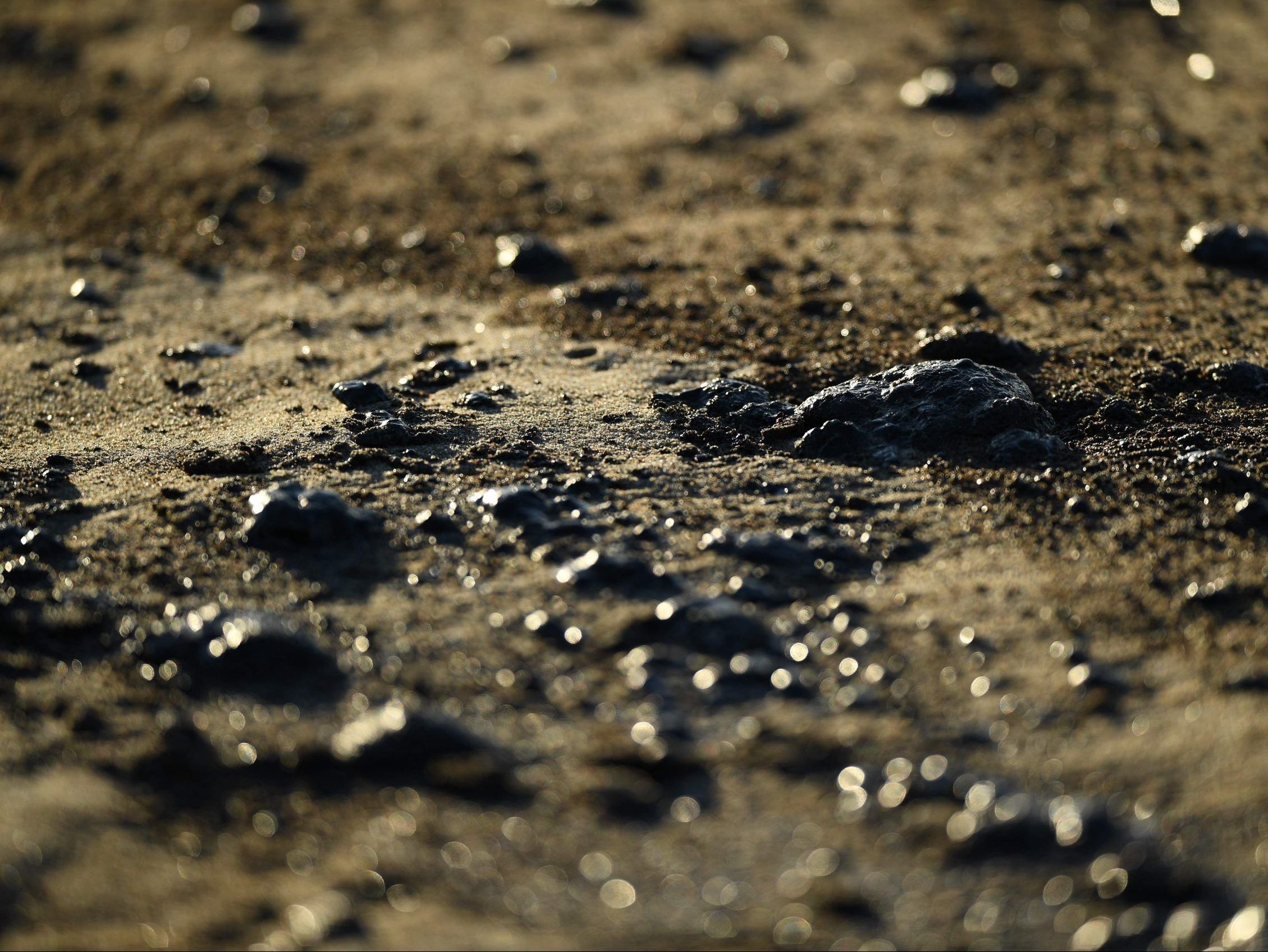
 torontosun.com
torontosun.com
Author of the article:Reuters
Reuters
Jonathan Allen
Publishing date:Oct 03, 2021 • 4 hours ago • 3 minute read • Join the conversation
Oil is seen on the beach in Huntington Beach, California on Oct. 3, 2021, after a pipeline breach connected to an oil rig off shore started leaking oil, according to an Orange County Supervisor.
Oil is seen on the beach in Huntington Beach, California on Oct. 3, 2021, after a pipeline breach connected to an oil rig off shore started leaking oil, according to an Orange County Supervisor. PHOTO BY PATRICK T. FALLON /AFP via Getty Images
Article content
HUNTINGTON BEACH — A large oil spill off the southern California coast left fish dead, birds mired in petroleum and wetlands contaminated, prompting local officials to call it an environmental catastrophe.
Advertisement
STORY CONTINUES BELOW
Article content
The U.S. Coast Guard, heading a clean-up response involving federal, state and city agencies, said on Sunday there was an around-the-clock investigation into how the spill occurred.
An estimated 126,000 gallons, or 3,000 barrels, had spread into an oil slick covering about 13 square miles of the Pacific Ocean since it was first reported on Saturday morning, said Kim Carr, the mayor of Huntington Beach, at a press conference.
She called the spill an “environmental catastrophe” and a “potential ecological disaster.” The beachside city, about 40 miles (65 km) south of Los Angeles, was bearing the brunt of the spill.
Carr added: “Our wetlands are being degraded and portions of our coastline are now covered in oil.”
Advertisement
STORY CONTINUES BELOW
Article content
The spill was caused by a breach connected to the Elly oil rig and stretched from the Huntington Beach Pier down to Newport Beach, a stretch of coast popular with surfers and sunbathers.
Carr said the oil rig was operated by Beta Offshore, a California subsidiary of Houston-based Amplify Energy Corporation. Calls to Beta and Amplify went unanswered.
Carr, in her remarks, added: “In the coming days and weeks we challenge the responsible parties to do everything possible to rectify this environmental catastrophe.”
Amplify Energy CEO Martyn Willsher said at a press conference in Long Beach that the pipeline had been shut off and remaining oil suctioned out. He said divers were still trying to determine where and why the spill occurred.
Advertisement
STORY CONTINUES BELOW
Article content
U.S. Representative Michelle Steel, a Republican representing part of the affected area, sent a letter to Democratic President Joe Biden requesting a major disaster declaration for Orange County, which would free up federal funds to help with the clean-up efforts.
Steel later told CNN: “This is a really serious disaster.”
Cottie Petrie-Norris, a Democratic state assembly member representing some areas affected by the spill, said she had “huge concerns” about the extent of the damage to the environment, communities and local economy.
She told CNN the spill was a “call to action that we need to stop drilling off our precious California coast.”
Oil production off California’s coast has declined sharply since its peak in the 1990s, in part due to the state’s strict environmental rules. Democratic Governor Gavin Newsom said he wants to end oil drilling in the state by 2045.
Advertisement
STORY CONTINUES BELOW
Article content
Offshore drilling was restricted in the state after a devastating 1969 oil spill off the coast of Santa Barbara that dumped 80,000 barrels into the ocean. More recently another spill off Santa Barbara in 2015 sent as much as 2,400 barrels onto the shore and into the Pacific.
Oceana, an ocean conservation group, also called for an end to offshore oil and gas drilling.
Jacqueline Savitz, Oceana’s chief policy officer, said in a statement: “This is just the latest tragedy of the oil industry. It’s well past time to prevent future oil spills by permanently protecting our coasts from offshore drilling.”
The spill occurred in federal waters. Officials said federal, state and city agencies were involved in a response headed by the U.S. Coast Guard.
Advertisement
STORY CONTINUES BELOW
Article content
On Sunday, Orange County supervisor Katrina Foley said the oil had infiltrated the Talbert Marsh, a large ecological reserve, causing “significant damage.”
Beaches were closed to swimming and a local air show was canceled, although some people were undeterred from setting up chairs on the beach to enjoy a sunny Sunday or strolling along the pier.
Carr said officials had deployed 2,050 feet of protective booms, which help contain and slow the oil flows.
The U.S. Coast Guard, working with local and state agencies, flew airplanes to assess the spill and had hired contractors to clean it up.
Officials said they were investigating the cause of the spill and the type of oil involved.
![OIL-SPILL-CALIF-1-scaled-e1633277669952[1].jpg OIL-SPILL-CALIF-1-scaled-e1633277669952[1].jpg](https://forums.canadiancontent.net/data/attachments/8/8603-1abbc84af440ceb96db3d469fa4145b9.jpg)

'Catastrophic' California oil spill kills fish, damages wetlands
HUNTINGTON BEACH — A large oil spill off the southern California coast left fish dead, birds mired in petroleum and wetlands contaminated, in what local officials c…
California oil spill cause probed; storm threatens cleanup
Author of the article:Reuters
Reuters
Publishing date:Oct 04, 2021 • 13 hours ago • 2 minute read • Join the conversation
This aerial picture taken on Oct. 3, 2021 shows people overlooking oil against a berm of sand to keep it from flowing from the ocean into the Santa Ana River as an oil spill from an offshore oil rig reaches the shore and sensitive wildlife habitats in Newport Beach, Calif.
This aerial picture taken on Oct. 3, 2021 shows people overlooking oil against a berm of sand to keep it from flowing from the ocean into the Santa Ana River as an oil spill from an offshore oil rig reaches the shore and sensitive wildlife habitats in Newport Beach, Calif. PHOTO BY DAVID MCNEW /AFP via Getty Images
Article content
HUNTINGTON BEACH — Federal and state investigators on Monday were probing what caused some 3,000 barrels of crude oil (126,000 gallons) to leak into the Pacific Ocean off the coast of southern California, as an approaching storm threatened cleanup efforts.
Advertisement
STORY CONTINUES BELOW
Article content
Huntington Beach, about 65 kilometres south of Los Angeles, was hit hardest with some 34 square km of ocean and portions of its coastline “covered in oil,” said Mayor Kim Carr.
Beaches were closed and dead fish and birds were washing up on the shore.
Officials said the oil appeared to come from a production platform operated by Beta Offshore, a California subsidiary of Houston-based offshore crude oil producer Amplify Energy Corp .
Amplify on Monday did not immediately return a call seeking information but on Sunday, Amplify executive Martyn Willsher said a pipeline carrying oil from the platform had been shut off and its remaining oil suctioned out. Divers were trying to determine where and why the spill occurred, he said.
Advertisement
STORY CONTINUES BELOW
Article content
Accuweather reported that a coming storm in the Los Angeles area could hamper cleanup efforts. The storm could bring higher swells into the area beginning late in the day and continuing through Tuesday.
Federal officials have stepped up scrutiny of aging and idled offshore energy pipelines. Energy companies have built 64,000 km of oil and gas pipelines in federal offshore waters since the 1940s.
Regulators have failed to address the risks from idled pipelines, platforms and other infrastructure on the sea floor, the watchdog U.S. Government Accountability Office (GAO) said this year.
“As pipelines age, they are more susceptible to damage from corrosion, mudslides and sea floor erosion,” GAO said.
Twenty-three oil and gas production facilities operate in federal waters off the coast of California, according to the U.S. Bureau of Ocean Energy Management. Beta Operating Co has three platforms, including Elly, the processing platform near where the leak occurred.
Officials deployed 2,050 feet (625 metres) of protective booms, which help contain and slow the oil flows, and about 3,150 gallons had been recovered on Sunday, the U.S. Coast Guard said.
![OIL-SPILL-scaled-e1633364156674[1].jpg OIL-SPILL-scaled-e1633364156674[1].jpg](https://forums.canadiancontent.net/data/attachments/8/8620-ee92934663dadf5d0a1ef646f8eb8bbc.jpg)
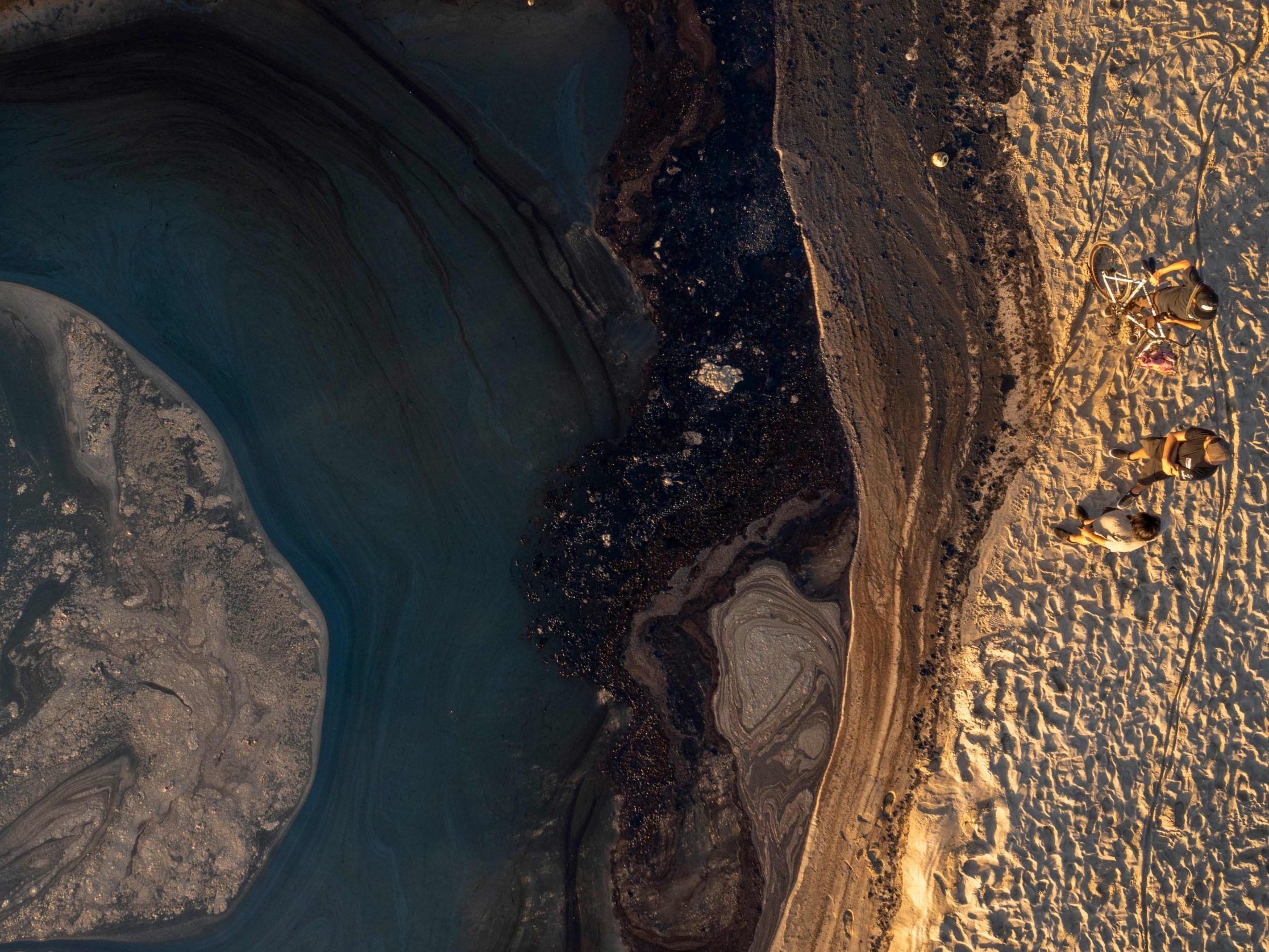
 torontosun.com
torontosun.com
Author of the article:Reuters
Reuters
Publishing date:Oct 04, 2021 • 13 hours ago • 2 minute read • Join the conversation
This aerial picture taken on Oct. 3, 2021 shows people overlooking oil against a berm of sand to keep it from flowing from the ocean into the Santa Ana River as an oil spill from an offshore oil rig reaches the shore and sensitive wildlife habitats in Newport Beach, Calif.
This aerial picture taken on Oct. 3, 2021 shows people overlooking oil against a berm of sand to keep it from flowing from the ocean into the Santa Ana River as an oil spill from an offshore oil rig reaches the shore and sensitive wildlife habitats in Newport Beach, Calif. PHOTO BY DAVID MCNEW /AFP via Getty Images
Article content
HUNTINGTON BEACH — Federal and state investigators on Monday were probing what caused some 3,000 barrels of crude oil (126,000 gallons) to leak into the Pacific Ocean off the coast of southern California, as an approaching storm threatened cleanup efforts.
Advertisement
STORY CONTINUES BELOW
Article content
Huntington Beach, about 65 kilometres south of Los Angeles, was hit hardest with some 34 square km of ocean and portions of its coastline “covered in oil,” said Mayor Kim Carr.
Beaches were closed and dead fish and birds were washing up on the shore.
Officials said the oil appeared to come from a production platform operated by Beta Offshore, a California subsidiary of Houston-based offshore crude oil producer Amplify Energy Corp .
Amplify on Monday did not immediately return a call seeking information but on Sunday, Amplify executive Martyn Willsher said a pipeline carrying oil from the platform had been shut off and its remaining oil suctioned out. Divers were trying to determine where and why the spill occurred, he said.
Advertisement
STORY CONTINUES BELOW
Article content
Accuweather reported that a coming storm in the Los Angeles area could hamper cleanup efforts. The storm could bring higher swells into the area beginning late in the day and continuing through Tuesday.
Federal officials have stepped up scrutiny of aging and idled offshore energy pipelines. Energy companies have built 64,000 km of oil and gas pipelines in federal offshore waters since the 1940s.
Regulators have failed to address the risks from idled pipelines, platforms and other infrastructure on the sea floor, the watchdog U.S. Government Accountability Office (GAO) said this year.
“As pipelines age, they are more susceptible to damage from corrosion, mudslides and sea floor erosion,” GAO said.
Twenty-three oil and gas production facilities operate in federal waters off the coast of California, according to the U.S. Bureau of Ocean Energy Management. Beta Operating Co has three platforms, including Elly, the processing platform near where the leak occurred.
Officials deployed 2,050 feet (625 metres) of protective booms, which help contain and slow the oil flows, and about 3,150 gallons had been recovered on Sunday, the U.S. Coast Guard said.
![OIL-SPILL-scaled-e1633364156674[1].jpg OIL-SPILL-scaled-e1633364156674[1].jpg](https://forums.canadiancontent.net/data/attachments/8/8620-ee92934663dadf5d0a1ef646f8eb8bbc.jpg)

California oil spill cause probed; storm threatens cleanup
HUNTINGTON BEACH — Federal and state investigators on Monday were probing what caused some 3,000 barrels of crude oil (126,000 gallons) to leak into the Pacific Oce…
